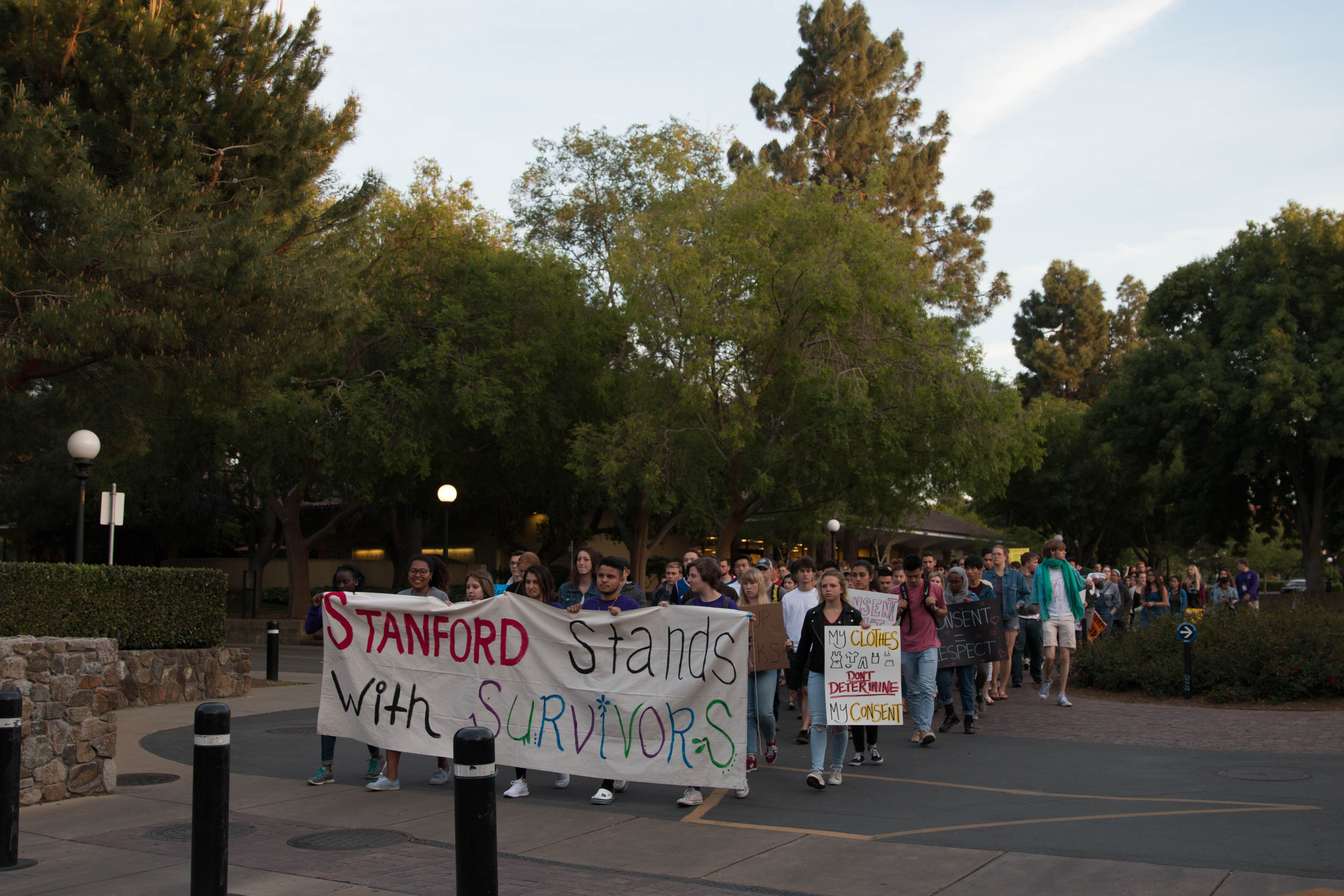Stanford’s Sexual Assault Awareness Month (SAAM) will take place online for the first time this month, after five years of being held through a series of in-person events.
SAAM focuses on engaging the Stanford community in increasing awareness of sexual assault, but its awareness efforts also encompass all forms of sexual violence, according to Sexual Assault and Relationship Abuse Education and Response (SARA) Office Director Carley Flanery.
“We take particular care in focusing on the way sexual violence intersects with other forms of oppression and violence through our programs and outreach activities,” Flanery said.
This year, with undergrads scattered around the world, SARA has worked toward “creatively and intentionally reimagining how to virtually engage” the Stanford community to raise awareness for sexual assault, SARA Assistant Director Grace Poon Ghaffari wrote in a statement to The Daily.
Popular events such as Take Back the Night (TBTN) and Denim Day — along with niche programs including “Rethinking Masculinity,” “Consent Conversations” and film discussions — will be available on SAAM at Stanford’s new website, which was designed to provide information, resources and Stanford-specific ways to engage with SAAM.
“Through this one-stop platform, we hope our community members can easily register for virtual events, get involved, engage with us via social media and create community from wherever they are,” Ghaffari said. “Currently, we have approximately 15 webinars, community conversations, interactive panels and virtual gatherings.”
Students can get involved in SAAM by attending a virtual event, sharing their stories, learning from resources, posting on social media, wearing denim on Denim Day and experiencing TBTN.
Denim Day, which is on April 29 this year, is a nationwide event through which individuals are encouraged to wear the material to raise awareness of rape and sexual assault. It began after a ruling by the Italian Supreme Court where a rape conviction was overturned after justices reasoned that, because the survivor was wearing tight jeans, she must have helped the rapist take them off and implied consent in doing so. Although Santa Clara County is under a shelter-in-place order, Flanery hopes that people will take to social media to show their support for sexual assault survivors.
SARA Student Staff Member Anna Sofranek ’22, who is in charge of leading this year’s TBTN and other events this month, said organizers are “pushing for virtual engagement through online media campaigns and events in order to create the same powerful impact of TBTN.”
Traditionally, TBTN began with protests for women’s rights and safety in Europe, but in recent years, it has manifested in the form of college students listening to survivor testimonies and marching through their campuses to raise sexual assault awareness.
TBTN typically consists of three events: the Rally (where community members come together to listen to speeches on sexual assault awareness), the March (where community members march around campus) and the Speak-Out (where community members provide their own testimonials). This year, for the Rally, the SARA Office will post pre-recorded videos of speakers on the SAAM website. For the March, SARA will collect pictures of posters and digital banners from the Stanford community and organize them in a visual gallery available to everyone, Sofranek said. Finally, for the Speak-Out, SARA will have a visual gallery of written testimonials, videos, images and artwork from survivors and supporters in the community that represent the Speak-Out experience.
“The hope is that participants can interact with these messages of support, empowerment and purpose in an effort to show solidarity with survivors and reinforce our collective commitment to sexual violence prevention,” Sofranek said.
Contact Camryn Pak at cpak23 ‘at’ stanford.edu.
